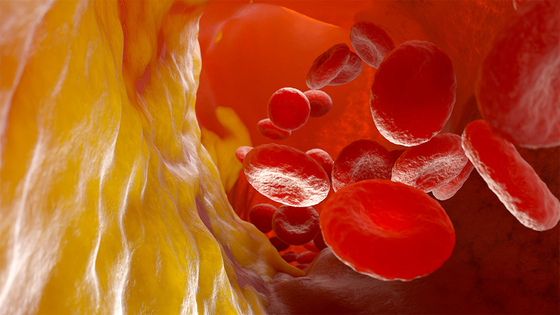Data from approximately 3,500 Japanese patients undergoing second-generation or later coronary DES implantation showed that patients meeting the ARC high bleeding risk (HBR) criteria were at high risk for gastrointestinal and intracranial bleeding within 7 years, and that taking oral anticoagulants was associated with both types of bleeding, as reported by Dr. Yuya Taguchi, Kurashiki Central Hospital, and colleagues in the May issue of Circulation Journal.
Predictors of Gastrointestinal and Intracranial Bleeding Events after Second-Generation or Later DES Implantation

Dr. Taguchi et al. examined the association between gastrointestinal and intracranial bleeding and ARC criteria for HBR in 3,453 patients who underwent initial PCI with a second or later generation DES at a single institution from 2010 to 2013.
With a mean follow-up of 2,663 days, 309 patients experienced a severe bleeding event, 122 (39.5%) a gastrointestinal bleeding and 121 (39.2%) an intracranial bleeding. There were 1,841 HBR patients and 1,612 non-HBR patients. The cumulative incidence of gastrointestinal bleeding (6.3% vs 1.9%: p<0.001) and intracranial bleeding (5.5% vs 2.3%: p<0.001) was significantly higher in the HBR group than in the non-HBR group.
Older age (HR 1.64 [95%CI 1.11-2.41] p=0.012), oral anticoagulants (HR 1.94 [95%CI 1.23-3.05] p=0.004) and severe chronic kidney disease (HR 1.80 [95%CI 1.02-3.19] p=0.043) were independent predictors of gastrointestinal bleeding. In addition, low body weight (HR 1.83 [95%CI 1.20-2.80] p=0.005), oral anticoagulants (HR 2.04 [95%CI 1.31-3.19] p=0.002) and stent placement in the LM (HR 1.79 [95%CI 1.18-2.70] p=0.006) were independent predictors of intracranial bleeding factor for intracranial hemorrhage.
Taguchi et al. summarized, “HBR based on ARC criteria consistently showed an association with gastrointestinal and intracranial hemorrhage over a 7-year follow-up period. In addition, gastrointestinal and intracranial bleeding each had three predictors, with only oral anticoagulant therapy being common, the other two being different.”
Taguchi Y, et al. Circ J. 2022; 86: 775-783
ご注意 当サイト内の全ての記事と動画の転載・転送はご遠慮ください。なお、法律上保護されたコンテンツの無許可の転載、複製、転用等は、当該コンテンツの権利者等から損害賠償請求その他の法的手続を申し立てられ、事案によっては処罰される可能性、また、故意にそれらを受け取った場合も同様の措置を受ける可能性がございます。ご不明な点がございましたら当社までご連絡ください。




